Flemish Painter Peter Paul Rubens
An artist from Antwerp

Flemish painter Peter Paul Rubens was the head of the Flemish Baroque School. The Flemish School of Painting was struggling in the last decades of the 16th century. It had been a long time since the school at come out with a master in the arts. During the time Rubens trained at this school he became a believer in the humanistic values of classical antiquity. During the painter's lifetime, he earned a reputation in the world of art. This brought him commissions from many European countries and he became known for his creative imagination, productivity, and capacity for work.
He hadn’t yet, reached the age of 45 when he was already being described as “the master workman of the world”. About himself, Rubens stated, “My talent is such that no enterprise, however vast in number and in the diversity of subjects, has surpassed my courage”. He was able to participate in public service and correspond with educated men on scholarly and archeological topics.
The Early Years
His father, Jan Rubens was a lawyer in Antwerp. Being a Calvinist he fled to Germany in 1568 to escape persecution by the Spaniards. While he was in Cologne, Germany he entered into an adulterous relationship with the wife of William the Silent, Prince of Orange, and was thrown into prison. When he regained his freedom after two years due to the efforts of his wife, Maria Pypelinckx, Jan Rubens was permitted to live in Siegen in Westphalia and it was here that his second son, Peter Paul was born on June 28, 1577. When he died in 1587 his wife brought all three of their children back to Antwerp.
Peter Paul Rubens grew up getting some schooling and learning both Latin and Greek He became a page to a noblewoman, Marguerite de Ligne, Countess of Lalaing. It gave him a taste of court life and later he returned to Antwerp, where he decided to become a painter. Rubens studied art under three masters – Tobias Verhaecht, Adam van Noort and Otto van Veen. He was accepted as a painting master in the Antwerp Guild of St. Luke in 1598.
Italian Period
During a trip to Italy in 1600 Rubens entered into the service of Vincenzo Gonzaga, Duke of Mantua who had a most notable art collection. During this time Rubens had the chance to visit other Italian cities such as Rome, Florence, and Genoa. It was in Rome that the artist finished his art education, studying the sculptures of antiquity and High Renaissance paintings particularly those by Michelangelo and Raphael. From 1601-1602 he painted three altarpieces for the Church of Santa Croce in Gerusalemme in Rome. The painting is now in a hospital in Grasse, France.
Duke Vincenzo sent Rubens on a diplomatic mission to Spain in 1603. There he painted an equestrian portrait of the Duke of Lerma and for the first time got a chance to see the Spanish royal collection with many paintings by Titian. Rubens returned to Rome in 1605 and stayed there for around three years. At this time the artist was commissioned to decorate the high altar of Santa Maria in Vallicella. He created an altarpiece that depicted the Madonna and Child with St. Gregory and other saints. It is now located in the Museum of Grenoble. At that time the altarpiece was shown in unfavorable lighting and Rubens replaced it with three pictures painted on slate. Before his work could be unveiled he was informed that his mother was seriously ill and left for Antwerp.
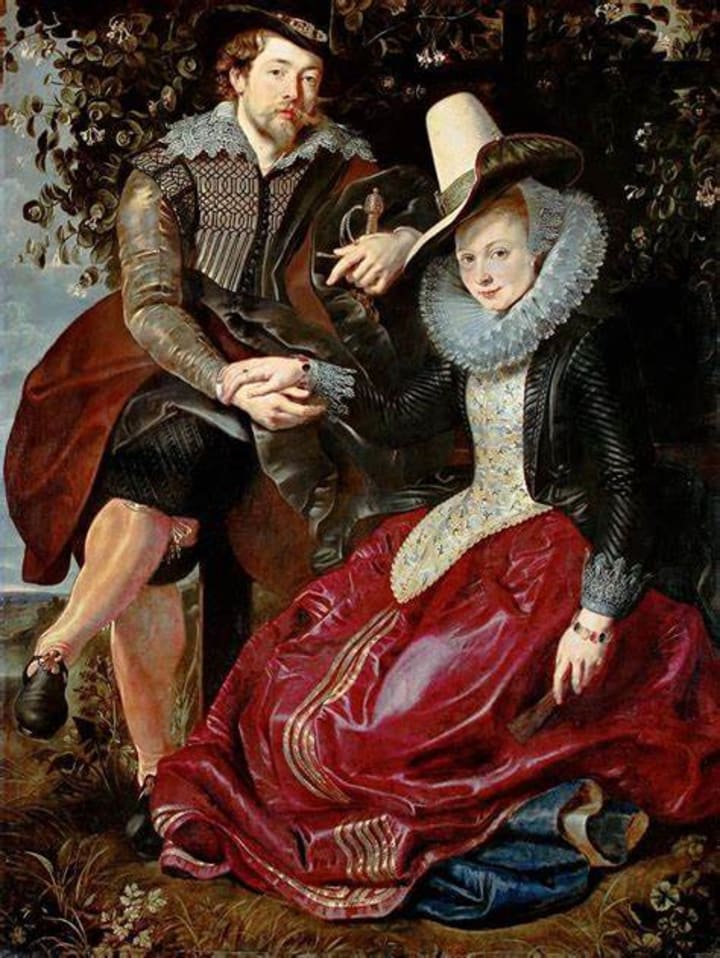
Antwerp Period
Arriving in Antwerp Rubens learned that his mother was already deceased. His first thoughts were to return to Italy but for different reasons, he remained where he was. The sovereigns of the Spanish Netherlands, Archduke Albert, and his consort, Isabella, appointed him a court painter with special privileges. Therefore Rubens didn’t return to Italy and in October of 1609, he was wed to Isabella Brant. A year later he purchased a house in Antwerp. At about this time his wonderful artwork “Rubens and his Wife in the Honeysuckle Arbor” was painted.
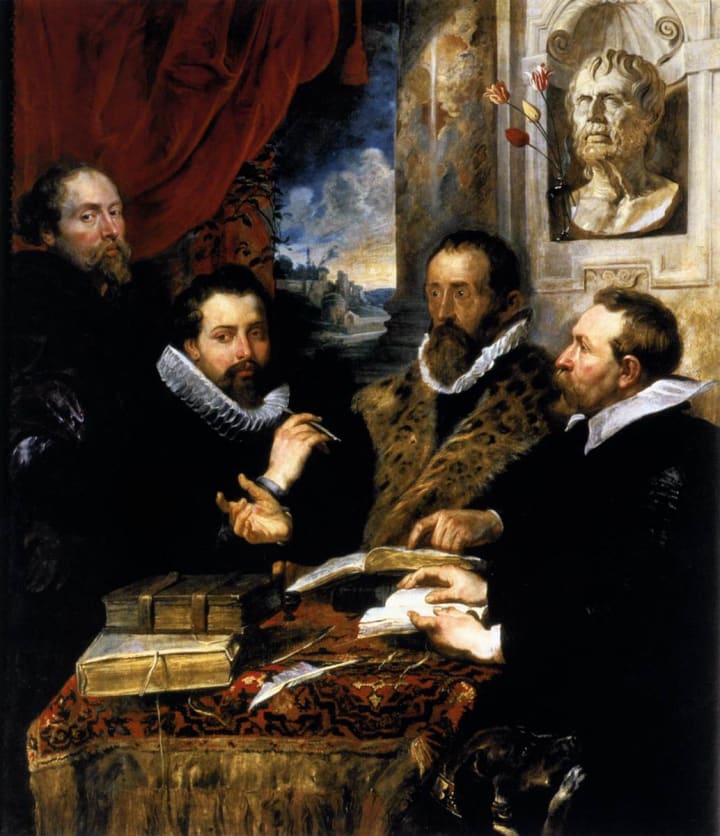
Rubens depicts the humanistic atmosphere of Antwerp in his painting “Four Philosophers”. This is actually a commemorative painting that represents the late Justus Lipsius, a Flemish philologist and humanist with two of his scholars, one being Ruben’s brother Philip (also recently deceased). Ruben’s first big project after returning from Italy involved the Raising of the Cross a triptych for the church of St. Walburga (now the Cathedral of Antwerp). Another triptych followed - Descent from the Cross in the Cathedral.
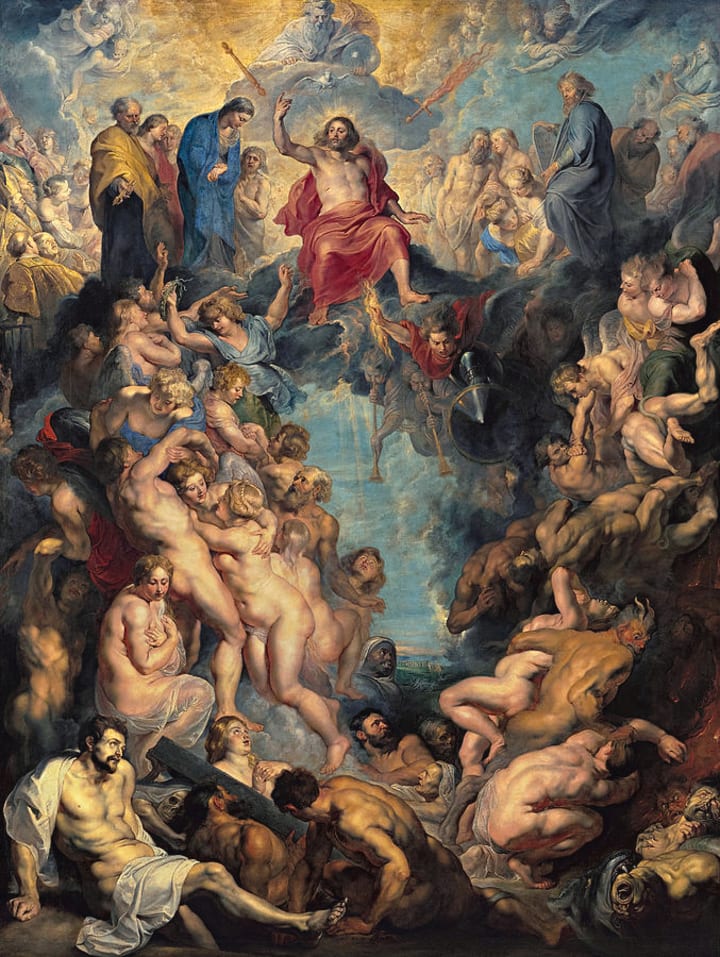
The artist created an apocalyptic vision concerning the torments of the damned in his artwork “Great Last Judgment”. With both pupils and assistants to help him Rubens opened a workshop. One of his assistants was Anthony Van Dyck, who later became a Flemish Baroque artist. The “Miracles of St. Ignatius of Loyola” and the “Miracles of St. Francis Xavier” are two altarpieces Rubens created glorifying the first saints of the Jesuit order. Rubens was commissioned to do a series of 39 ceiling paintings for the Jesuit Church of Antwerp in 1620. In 1718 these artworks were destroyed in a fire.
Internationally Known
Rubens was commissioned to decorate two galleries, one being the Luxembourg Palace, the residence of Queen Mother Marie de Medicis in Paris, France in 1622. He was to create a series of 21 large canvasses that illustrated the life of Marie. This artwork is now in the Louvre. He designed the tapestry series, the “History of Constantine the Great” for King Louis XIII. Some years later he was commissioned by the Infanta Isabella to design the tapestry cycle, the “Triumph of the Eucharist” for the Convent of the Descalzas Reales in Madrid, Spain.
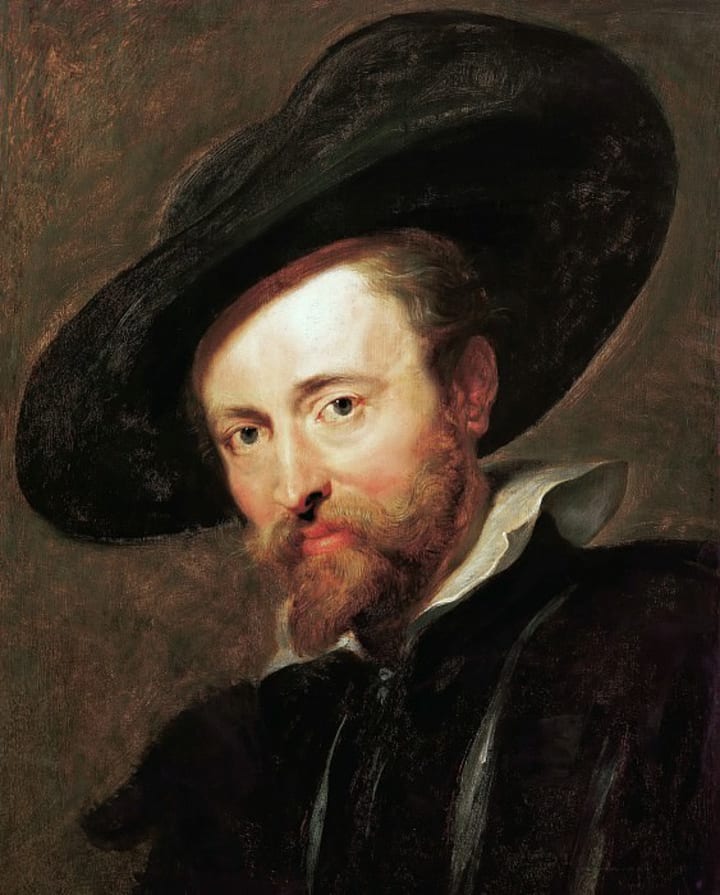
He painted such impressive altarpieces for churches in Antwerp like the “Adoration of the Magi” now in the Antwerp Museum, the “Assumption of the Virgin” and the “Madonna and Saints”. You can find the famous “Self-portrait” in Windsor Castle. It was painted at the request of the Prince of Wales, later King Charles I of England. The artist resumed his diplomatic activity in the years 1628 – 1630 and was instrumental in establishing peace between England and Spain. He was knighted by Charles I and the University of Cambridge awarded him an honorary Master of Arts degree.
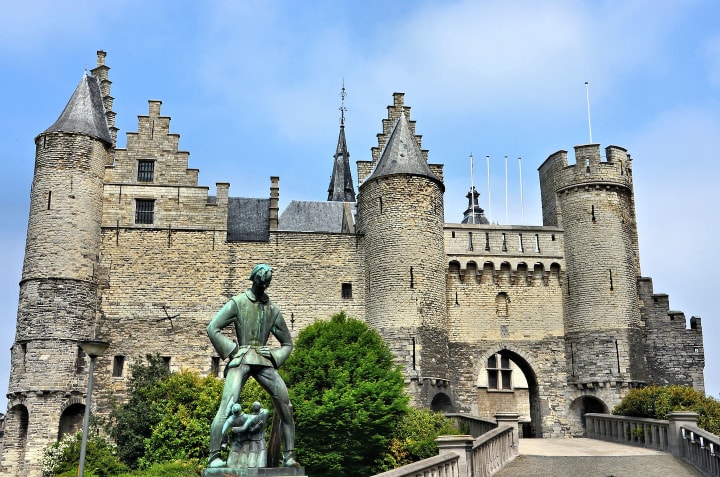
Ruben’s Last Years
His first wife died in 1626 and in December of 1630, he wed for the second time to Helena Fourment, a 16-year-old girl. After he was finally free of diplomatic employment Rubens purchased a country estate, the Castle of Steen located to the south of Antwerp.
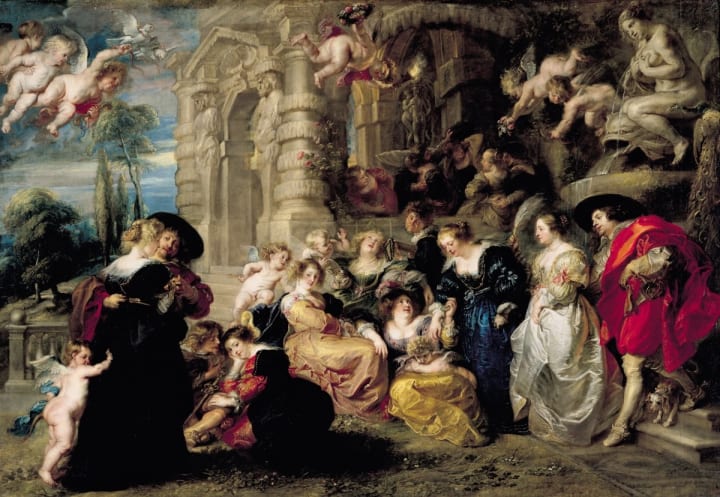
In his later years, Rubens became interested in nature and created an enchanting painting “Garden of Love”. He also painted a series of landscapes among them the “Castle of Steen”. He also created portraits of his wife Helena and children.
During his last decade, Rubens did some ceiling paintings for the Banqueting House at Whitehall, commissioned by Charles I. In 1635, when the new governor of the Netherlands, Cardinal Infante Ferdinand entered Antwerp the artist was requested to make temporary street decorations. Along with his assistants and craftsmen, he created painted theaters and triumphal arches. His final project was a cycle of mythological paintings for the decoration of Philip IV’s hunting lodge near Madrid, Spain, the Torre de la Parada.
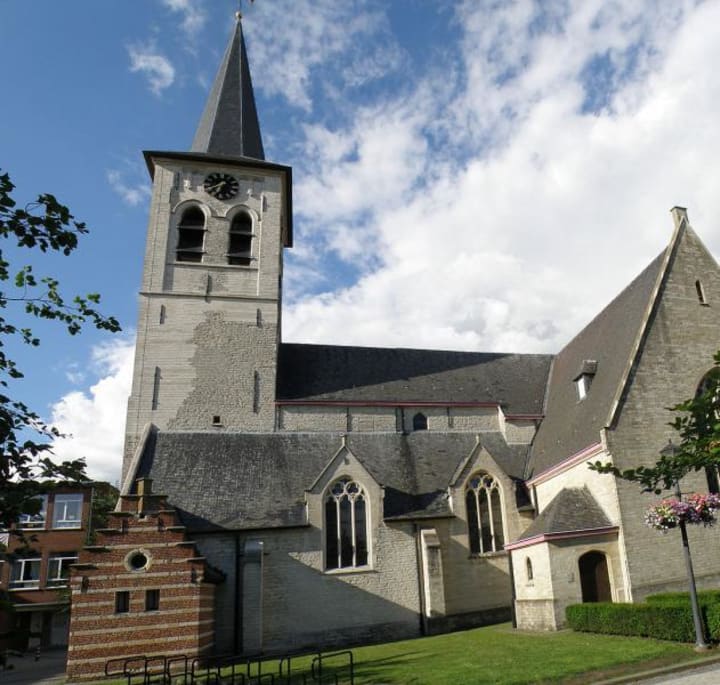
At the end of his life, Rubens was troubled by arthritis and eventually had to give up painting. He did one final self-portrait and died in Antwerp on May 30, 1640, and was interred in St. Jacob’s Church, Antwerp.
About the Creator
Rasma Raisters
My passions are writing and creating poetry. I write for several sites online and have four themed blogs on Wordpress. Please follow me on Twitter.






Comments
There are no comments for this story
Be the first to respond and start the conversation.